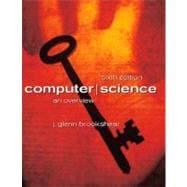
What is included with this book?
|
1 | (14) | |||
|
2 | (4) | |||
|
6 | (4) | |||
|
10 | (1) | |||
|
11 | (1) | |||
|
12 | (1) | |||
|
13 | (1) | |||
|
14 | (1) | |||
| PART ONE: MACHINE ARCHITECTURE | 15 | (102) | |||
|
17 | (62) | |||
|
18 | (8) | |||
|
26 | (3) | |||
|
29 | (6) | |||
|
35 | (9) | |||
|
44 | (3) | |||
|
47 | (8) | |||
|
55 | (5) | |||
|
60 | (5) | |||
|
65 | (5) | |||
|
70 | (6) | |||
|
76 | (1) | |||
|
77 | (2) | |||
|
79 | (38) | |||
|
80 | (5) | |||
|
85 | (4) | |||
|
89 | (6) | |||
|
95 | (4) | |||
|
99 | (5) | |||
|
104 | (4) | |||
|
108 | (6) | |||
|
114 | (1) | |||
|
115 | (2) | |||
| PART TWO: SOFTWARE | 117 | (202) | |||
|
119 | (48) | |||
|
120 | (4) | |||
|
124 | (6) | |||
|
130 | (6) | |||
|
136 | (5) | |||
|
141 | (8) | |||
|
149 | (9) | |||
|
158 | (4) | |||
|
162 | (3) | |||
|
165 | (1) | |||
|
166 | (1) | |||
|
167 | (58) | |||
|
168 | (2) | |||
|
170 | (8) | |||
|
178 | (6) | |||
|
184 | (12) | |||
|
196 | (10) | |||
|
206 | (12) | |||
|
218 | (5) | |||
|
223 | (1) | |||
|
224 | (1) | |||
|
225 | (60) | |||
|
226 | (10) | |||
|
236 | (12) | |||
|
248 | (7) | |||
|
255 | (10) | |||
|
265 | (3) | |||
|
268 | (3) | |||
|
271 | (7) | |||
|
278 | (3) | |||
|
281 | (2) | |||
|
283 | (2) | |||
|
285 | (34) | |||
|
286 | (2) | |||
|
288 | (6) | |||
|
294 | (6) | |||
|
300 | (8) | |||
|
308 | (2) | |||
|
310 | (2) | |||
|
312 | (2) | |||
|
314 | (2) | |||
|
316 | (1) | |||
|
317 | (2) | |||
| PART THREE: DATA ORGANIZATION | 319 | (116) | |||
|
321 | (48) | |||
|
322 | (3) | |||
|
325 | (7) | |||
|
332 | (5) | |||
|
337 | (4) | |||
|
341 | (12) | |||
|
353 | (7) | |||
|
360 | (1) | |||
|
361 | (5) | |||
|
366 | (1) | |||
|
367 | (2) | |||
|
369 | (28) | |||
|
370 | (1) | |||
|
371 | (6) | |||
|
377 | (4) | |||
|
381 | (4) | |||
|
385 | (6) | |||
|
391 | (3) | |||
|
394 | (1) | |||
|
395 | (2) | |||
|
397 | (38) | |||
|
398 | (3) | |||
|
401 | (3) | |||
|
404 | (14) | |||
|
418 | (3) | |||
|
421 | (4) | |||
|
425 | (3) | |||
|
428 | (4) | |||
|
432 | (1) | |||
|
433 | (2) | |||
| PART FOUR: THE POTENTIAL OF ALGORITHMIC MACHINES | 435 | (102) | |||
|
437 | (54) | |||
|
438 | (4) | |||
|
442 | (3) | |||
|
445 | (14) | |||
|
459 | (9) | |||
|
468 | (5) | |||
|
473 | (8) | |||
|
481 | (3) | |||
|
484 | (4) | |||
|
488 | (1) | |||
|
489 | (2) | |||
|
491 | (46) | |||
|
492 | (5) | |||
|
497 | (6) | |||
|
503 | (4) | |||
|
507 | (6) | |||
|
513 | (10) | |||
|
523 | (9) | |||
|
532 | (3) | |||
|
535 | (1) | |||
|
536 | (1) | |||
| Appendixes | 537 | (62) | |||
| A ASCII | 539 | (2) | |||
| B Circuits to Manipulate Two's Complement Representations | 541 | (4) | |||
| C A Typical Machine Language | 545 | (2) | |||
| D Program Examples | 547 | (10) | |||
| E The Equivalence of Iterative and Recursive Structures | 557 | (2) | |||
| F Answers to Questions/Exercises | 559 | (40) | |||
| Index | 599 |
The New copy of this book will include any supplemental materials advertised. Please check the title of the book to determine if it should include any access cards, study guides, lab manuals, CDs, etc.
The Used, Rental and eBook copies of this book are not guaranteed to include any supplemental materials. Typically, only the book itself is included. This is true even if the title states it includes any access cards, study guides, lab manuals, CDs, etc.